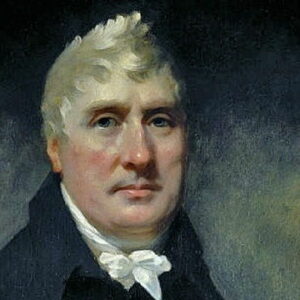John Rennie was a Scottish civil engineer who became well-known for his work on canals, harbors, and bridges throughout the United Kingdom. Rennie was widely regarded as one of the greatest engineers of his generation for his technical brilliance and creativity. He developed an early interest in mechanics as one of the sons of a prosperous farmer. He spent a great deal of time as a young boy in the workshop of Andrew Meikle, the mechanical engineer credited with inventing the threshing machine. By the age of ten, Rennie had constructed working models of a windmill, a steam engine, and a pile engine. After completing his education, he was offered the position of schoolmaster, which he declined in favor of pursuing a career as a millwright. Following a period of employment with Meikle, he accepted a position as an engineer under James Watt at Boulton and Watt’s Soho Foundry in Smethwick. In one of his earliest major projects, he designed the machinery for Boulton and Watt’s project at the Albion Flour Mills in London. He eventually established his own business and shifted his focus to canal and bridge construction. He designed and built a number of bridges, but is best remembered for the three bridges he built across the River Thames in London.
Childhood & Adolescence
John Rennie was born in East Lothian, Scotland on 7 June 1761. He was a prosperous farmer’s fourth son.
He demonstrated an early interest in mechanics and was naturally gifted in this field. He frequently skipped school to visit Andrew Meikle’s millwright’s workshop. Meikle was a well-known individual, best known as the inventor of the threshing machine.
By the time John was ten, he had constructed working models of a windmill, a steam engine, and a pile engine, and he began working in Meikle’s workshop during his vacations.
He began his education at Prestonkirk Parish Church’s parish school before transferring to Dunbar’s burgh school.
In 1777, when the Dunbar schoolmaster resigned to take up another position, Rennie was offered the position.
He declined the offer and continued to work with Meikle. Even before he turned 18, Rennie built a number of corn and flour mills near Dundee.
He enrolled at the University of Edinburgh in 1780 and studied there until 1783.
Career of John
He began his career as a millwright before joining Boulton & Watt in 1783, a partnership between English manufacturer Matthew Boulton and celebrated Scottish engineer James Watt.
In 1784, he traveled to London to work on a project for Boulton & Watt. He was appointed manager of the Albion Flour Mills and was responsible for the design of all of the mill’s machinery. Rennie used iron for the shafting and framing instead of wood—a novel concept at the time.
In 1791, he established his own business and expanded into civil engineering. He developed a special interest in the construction of canals and waterways, beginning with the Lancaster Canal in 1792, the Chelmer and Blackwater Navigation in 1793, and the Crinan Canal in 1794. (started in 1794).
The Kennet and Avon Canal was one of the major canal projects he oversaw, which included the Dundas Aqueduct, Caen Hill Locks, and Crofton Pumping Station. The project began in 1794 and was completed in 1810.
John Rennie also established himself as a brilliant architect endowed with an innate aesthetic sense. Along with canals, he built a number of bridges and pioneered several innovative bridge-building techniques. Among the magnificent bridges he constructed were the Leeds and Waterloo bridges.
He was heavily involved in the development of commercial harbours and docks. He was instrumental in the construction of London’s West India Dock and Blackwall Dock, among others. He also contributed to the enhancement of Chatham, Devonport, Portsmouth, Holyhead, Ramsgate, and Sheerness harbours and dockyards.
Significant Works of John
John Rennie is credited with building a number of structurally sound and aesthetically pleasing bridges, but the Waterloo Bridge is widely considered to be his masterpiece. The granite bridge, which spans the River Thames in London, had nine arches, each 120 feet (36.6 m) in span and separated by double Doric stone columns. It was 2,456 feet (748.6 m) in length.
Awards and Accomplishments
On 29 March 1798, John Rennie was elected a Fellow of the Royal Society. In 2014, he was inducted into Scotland’s Engineering Hall of Fame.
Personal History and Legacies
In 1790, he married Martha Ann, the daughter of E. Mackintosh. The couple had seven children, two of whom became notable engineers in their own right: George and John.
John Rennie was a devoted professional who worked extremely hard. It is believed that his life was cut short by the constant labor and pressures of his job. He died on 4 October 1821, following a brief illness.
Estimated Net Worth
The net worth of John is unavailable.


